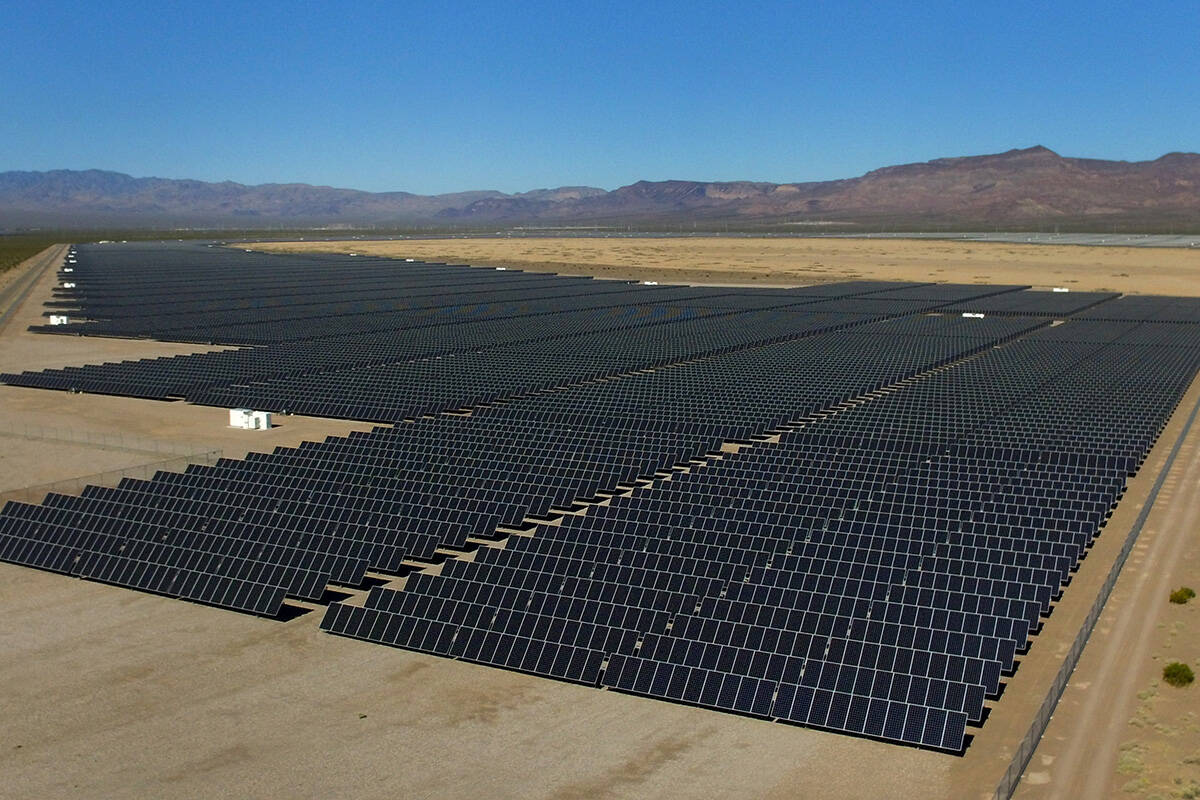EDITORIAL: Natural gas plant a needed back-up for unreliable solar
As Nevadans ramp up their energy use each day, the availability of solar energy declines. That’s why reliable sources of power, such as natural gas plants, remain vital to our energy infrastructure despite green protestations to the contrary.
Critics are attacking NV Energy for plans to build two natural gas turbines at its Silverhawk Generating Station in Moapa. The project will cost around $350 million. The turbines will be capable of generating 440 megawatts, but it’s expected to run for only about 700 hours a year. That’s less two hours a day.
This has prompted the Nevada Conservation League to paint the project as wasteful. On the surface, that critique makes sense. But it falls apart when confronted with the reality of energy use.
NV Energy currently has around 6,100 megawatts of power-generating capacity. During a typical day in March, demand will peak at around 2,500 to 3,000 megawatts, according to NV Energy CEO Doug Cannon. But in the summer heat, demand can soar to 8,500 to 9,000 megawatts.
To make up the difference, NV Energy buys power on the open market. For a variety of reasons, including the shuttering of fossil fuel power plants under the guise of fighting global warming, that power has gotten increasingly expensive. It can cost $1,800 a megawatt hour during the summer. Mr. Cannon said the new natural gas plant will produce power at $50 a megawatt hour.
Some environmentalists are grousing that the new plant relies on natural gas, which produces carbon emissions. But it will also produce power when the sun goes down, which solar energy doesn’t.
“Peak system usage typically occurs between 5 p.m. and 9 p.m. on a hot summer day,” Mr. Cannon said in an interview. During that time period, “solar generation is dropping off familiarly dramatically, but that’s when customers want power the most.”
This is the problem with an overreliance on solar energy. The power isn’t available when usage peaks. Las Vegas has experienced this firsthand. In each of the past three years, NV Energy has had to beg customers to conserve power during periods of high demand.
Perhaps battery storage will one day fill in the gaps, but not yet. Mr. Cannon said NV Energy doesn’t have enough current battery capacity to power the entire state for even a few minutes. New battery projects are coming, but they’re expensive. A 200-megawatt battery storage system in Humboldt County will cost $465 million.
New construction directly benefits NV Energy. It gets a set rate of return — currently 9.4 percent — on capital expenditures. But the project is a legitimate endeavor that will help stave off blackouts triggered by unrealistic renewable mandates.
Nevada ratepayers are the losers in all this. Environmentalists have preached a siren song convincing policymakers and voters that renewable energy is both affordable without subsidies and reliable. It’s not, and we’re going to be paying for it.

















